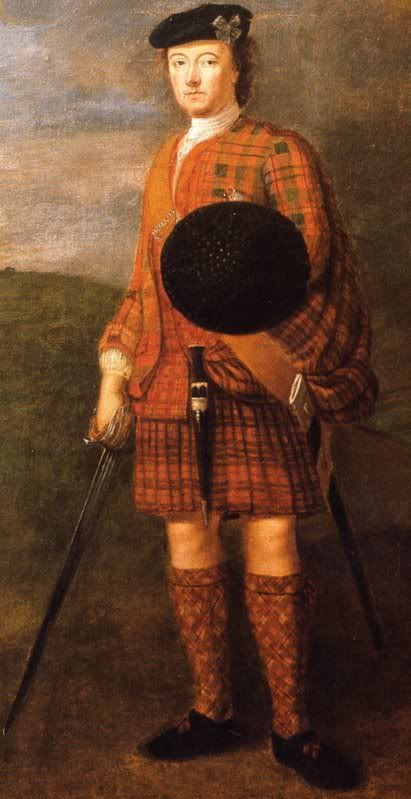Belting the Plaid: How'd They Do It??
Many of us - especially reenactment types - are familiar with the current method of donning a plaid ("great kilt"):
Throw it out full-length on the ground with the belt underneath, kneel on one end and hand-pleat it by pulling even lengths of fabric towards you, lay on it, fasten the belt, and stand up. You end up with loose "knife" type pleats in the rear and sides, and relatively flat aprons in front. Not really easy and quick, but it works.
But, is that how they actually accomplished this feat back in the day when belted plaids were a common garment in the Highlands?
Consider a couple of images, both from the 1740's. In the first, a famous full-length portrait of Lord George Murray, the plaid is carefully pleated in the entire circumference with precise, evenly spaced pleats of equal size:

In the second image, a drawing of Highland soldiers in Europe by a German artist, the plaid's pleating is again carefully depicted. In this case they are in the form of box-pleats, not at all like what you end up with when you hand-pleat the plaid on the ground:

So, what are we missing? Niether of these historic images resemble "great kilts" as modern reenactors and faire-goers wear them, in terms of the pleating. So, how'd they do it back then? Sewn in belt-loops? Drawstrings? Or simply some method of putting it on that's lost to history?
Brian
"They who can give up essential liberty to obtain a little temporary safety, deserve neither liberty nor safety." ~ Benjamin Franklin
















Bookmarks